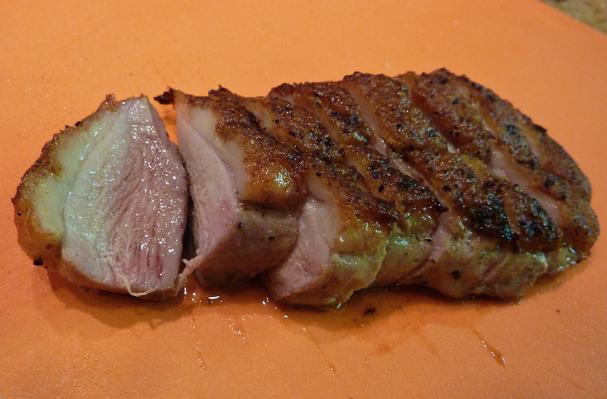Physical Description
Duck meat is considered to be "white" meat, even though the meat on a duck is considerably darker than other poultry meats such as chicken or turkey.
Colors: darker red color
Tasting Notes
Flavors: Due to the darker color of the duck meat, this gives the meat a stronger and richer flavour.
Mouthfeel: Firm, Can be tough if overcooked. breast meat can have a livery texture if overcooked. skin can be crisped to be crunchy.
Food complements: Wild rice, Sweet potatoes, Steemed baby carrots, Sauteed escarole, Grapes
Wine complements: Red, Pinot noir
Beverage complements: Beer, Soda
Substitutes: Squab, Goose, Turkey, Rabbit, Chicken
Selecting and Buying
Seasonality: september, opctober, november, december
Peak: september, opctober, november
Choosing: The larger the breast the tougher the meat will be.
Buying: Buying free range duck or wild duck will be the best options.
Procuring: Ducks are a migratory bird and can be hunted during season. Refer to local regulations to learn your local season and limits.
Preparation and Use
Score the fat to allow it to render out during cooking. Duck breast can be roasted, grilled, or pan seared. The meat is quite good when eaten rare.
Here's a great tip: when preparing duck breasts, score the fast side well in cross-hatches. Then place fat-side down in a skillet. Pour water into the skillet just to the line between the fat and the meat. Cook until the water boils away. This will trender much of the fat, create a crisp skin on the bottom, and the breast meat stays rare.
Cleaning: If you are cooking the breast meat separately and you see it has a "silver skin", remove that fiberous skin because it will be for tough eating.
Conserving and Storing
Duck meat is perishable like any other type of meat. It freezes well and can be salted.
Social/Political
Duck hunting is a world renowned pass time. Many organizations are committed to the preservation of this animal and it's habitats.










